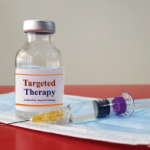 The Potential of Treat-to-Target Management for Patients with SpA
The Potential of Treat-to-Target Management for Patients with SpA
SINGAPORE—The practice of medicine is both a science and an art. In recent years, rheumatology has seen a push toward incorporating objective treat-to-target strategies into patient care rather than clinicians relying on vaguer measures of success, such as the subjective opinion of the medical provider about to how the patient is doing. Although the adoption of treat-to-target has accelerated for such conditions as rheumatoid arthritis and gout, that change is less true for the management of spondyloarthritis (SpA).
At the 26th Congress of the Asia Pacific League of Associations for Rheumatology (APLAR) in August 2024, Muhammad Haroon, PhD, MSc Sports Medicine, MBBS (KE), CSCST (Rheum), CSCST (GIM), FRCPI, FFSEM, FACR, consultant rheumatologist, head of the Department of Rheumatology, Fatima Memorial Hospital and FMH College of Medicine and Dentistry, Lahore, Pakistan, discussed treating to target for SpA in detail.
Treat to Target
Dr. Haroon began by defining the treat-to-target paradigm, which was first made popular for the management of diabetes. Several key elements are:
- Choosing a target;
- Regularly monitoring well-validated outcome measures;
- Modifying therapy when needed; and
- Engaging the patient in shared decision making.
The idea of using treat to target for patients with SpA began as early as 2014, but that was mostly based on expert opinion. Solid evidence supporting the efficacy of the practice for patients with SpA has been lacking. In fact, the 2019 SPARTAN guideline conditionally recommend against treat to target in SpA.1
Dr. Haroon discussed the rationale for treating to target throughout the majority of his lecture. This approach is intriguing due to several clinical observations:
- There appears to be a longitudinal association of disease activity in SpA with the progression of radiographic damage; and
- In patients who achieve remission, there is tends to be little to no radiographic progression.
The Data
To date, the most important study on treat-to-target in patients with SpA is TICOSPA, an open one-year clinical trial with a main objective of comparing the benefits of tight control/treat-to-target management in axial SpA (axSpA) vs. that of usual care (i.e., adjusting the patient’s medication without the specific use of outcome-based targets). In this prospective, cluster-randomized controlled study, researchers enrolled 160 participants who met Assessment of SpondyloArthritis international Society (ASAS) criteria for axSpA, had an Ankylosing Spondylitis Disease Activity Score (ASDAS) of ≥2.1, did not have optimal outcomes with non-steroidal anti-inflammatory drugs (NSAIDs) and were biologic naive.2

